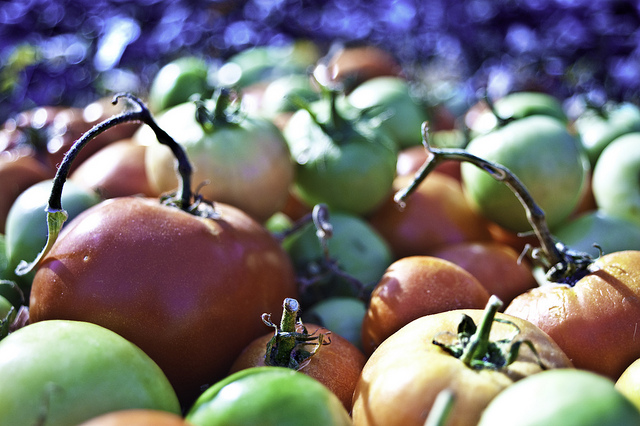Go Underground for Year-Round Gardening
 Winter is already nipping quickly at the heels of fall in some regions of the Northern Hemisphere, even when it seems like fall has barely begun. We can talk about winter-friendly crops (and we will, later this week), but there's another way to get through the winter: a greenhouse. Traditional greenhouses, however, can be expensive to build, difficult to maintain, and hard to keep truly warm in the winter if you live in a cold locale.
Winter is already nipping quickly at the heels of fall in some regions of the Northern Hemisphere, even when it seems like fall has barely begun. We can talk about winter-friendly crops (and we will, later this week), but there's another way to get through the winter: a greenhouse. Traditional greenhouses, however, can be expensive to build, difficult to maintain, and hard to keep truly warm in the winter if you live in a cold locale.
Fortunately, someone has already solved this problem. In South America, where the winters can get brutal and the landscape can be fierce, designers came up with the innovative solution of going underground with a design called the walipini, after the Aymara word for "place of warmth." It's basically a giant hole in the ground with a glass roof, and it does the trick quite handily, keeping plants toasty in the winter and repelling the elements.
And, oh, it can be super-affordable, as reported in a test project where participants built one for around $300.
Here's how it works: You start out digging a large pit with rammed earth walls (you don't want it collapsing!). Earth happens to be a fantastic insulator, which is why underground and rammed earth homes are so common in cold regions of the world; once an underground space gets warm, it tends to stay warm. Using rammed earth and structural supports if necessary, the long wall of the pit facing away from the winter sun has to be built up so you can create a slanted roof of greenhouse glass or plastic.
The slanted roof faces the winter sun to take full advantage of the limited daylight, and the interior of a walipini can get extremely toasty during the winter months; so much so that some gardeners need to add shadecloth along with traditional greenhouse vents to avoid broiling their plants. The space inside can hold trees in addition to both raised and ground-level beds, and can also be set up as an accommodation for animals who might need extra shelter in extreme weather.
Using low-cost building materials, it's possible to construct an earth-sheltered greenhouse for a minimal outlay of cash, and it will quickly pay for itself. Since such structures are much less expensive to maintain and operate than conventional greenhouses, and they produce a wealth of produce in the winter, they can quickly become a vital part of a winter farm, ensuring a steady supply of food, and treats, for people who might be a tad tired of brassicas!
The Benson Institute has a set of detailed guidelines on walipini construction available online, and you could build one yourself, although if you're nervous, you can contact an area carpenter or handyman for help. This amazing project could just make you the envy of the neighbors, and you'll definitely be a popular person during the winter months when everyone is craving some fresh, interesting produce.
In addition, as demonstrated by those who use these structures for animals, they can also be a fantastic way to expand the scope of a farm or garden. Chickens, for example, need extra protection in the winter, and a walipini can make a great chicken accommodation to keep them warm and snug. Likewise, small livestock like goats, sheep, and rabbits could spend nights or really cold days inside a fenced-off area of the greenhouse along with the chickens to protect them from the cold. Be sure to consult a Cincinnati fencing company on the best options for animal fencing, as you don't want them getting loose and ruining your plants or injuring themselves.
Sometimes, you have to dig a little deeper for solutions to garden problems!
Katie Marks writes for Networx.com.
Looking for a Pro? Call us (866) 441-6648

Landscaping Average Costs
Landscapers Experiences

The Right Landscaper Can Change A Yard From Terrible To Terrific

Contracted A Large Tree Trimming Job For A Reasonable Price



